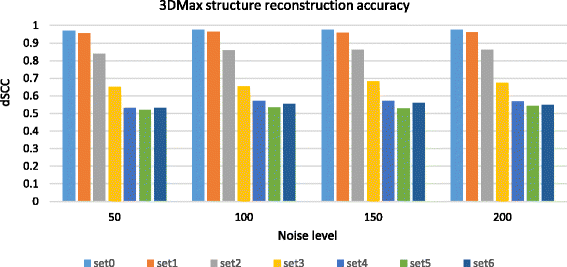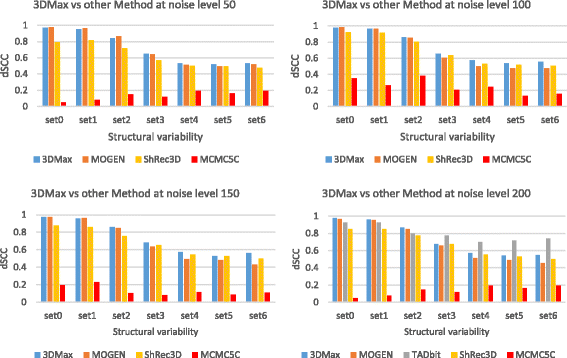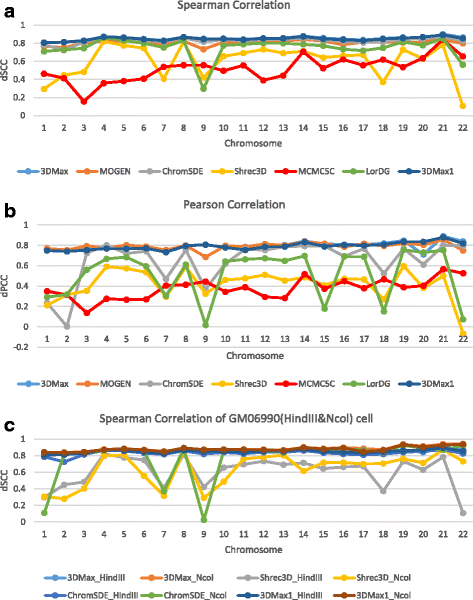A maximum likelihood algorithm for reconstructing 3D structures of human chromosomes from chromosomal contact data
- PMID: 29471801
- PMCID: PMC5824572
- DOI: 10.1186/s12864-018-4546-8
A maximum likelihood algorithm for reconstructing 3D structures of human chromosomes from chromosomal contact data
Abstract
Background: The development of chromosomal conformation capture techniques, particularly, the Hi-C technique, has made the analysis and study of the spatial conformation of a genome an important topic in bioinformatics and computational biology. Aided by high-throughput next generation sequencing techniques, the Hi-C technique can generate genome-wide, large-scale intra- and inter-chromosomal interaction data capable of describing in details the spatial interactions within a genome. These data can be used to reconstruct 3D structures of chromosomes that can be used to study DNA replication, gene regulation, genome interaction, genome folding, and genome function.
Results: Here, we introduce a maximum likelihood algorithm called 3DMax to construct the 3D structure of a chromosome from Hi-C data. 3DMax employs a maximum likelihood approach to infer the 3D structures of a chromosome, while automatically re-estimating the conversion factor (α) for converting Interaction Frequency (IF) to distance. Our results show that the models generated by 3DMax from a simulated Hi-C dataset match the true models better than most of the existing methods. 3DMax is more robust to structural variability and noise. Compared on a real Hi-C dataset, 3DMax constructs chromosomal models that fit the data better than most methods, and it is faster than all other methods. The models reconstructed by 3DMax were consistent with fluorescent in situ hybridization (FISH) experiments and existing knowledge about the organization of human chromosomes, such as chromosome compartmentalization.
Conclusions: 3DMax is an effective approach to reconstructing 3D chromosomal models. The results, and the models generated for the simulated and real Hi-C datasets are available here: http://sysbio.rnet.missouri.edu/bdm_download/3DMax/ . The source code is available here: https://github.com/BDM-Lab/3DMax . A short video demonstrating how to use 3DMax can be found here: https://youtu.be/ehQUFWoHwfo .
Keywords: 3D chromosome structure; 3D genome; Chromosome conformation capture; Gradient ascent; Hi-C.
Conflict of interest statement
Ethics approval and consent to participate
Not applicable.
Consent for publication
Not applicable.
Competing interests
The authors declare that they have no competing interests.
Publisher’s Note
Springer Nature remains neutral with regard to jurisdictional claims in published maps and institutional affiliations.
Figures








Similar articles
-
3D genome structure modeling by Lorentzian objective function.Nucleic Acids Res. 2017 Feb 17;45(3):1049-1058. doi: 10.1093/nar/gkw1155. Nucleic Acids Res. 2017. PMID: 28180292 Free PMC article.
-
Chromosome3D: reconstructing three-dimensional chromosomal structures from Hi-C interaction frequency data using distance geometry simulated annealing.BMC Genomics. 2016 Nov 7;17(1):886. doi: 10.1186/s12864-016-3210-4. BMC Genomics. 2016. PMID: 27821047 Free PMC article.
-
MOGEN: a tool for reconstructing 3D models of genomes from chromosomal conformation capturing data.Bioinformatics. 2016 May 1;32(9):1286-92. doi: 10.1093/bioinformatics/btv754. Epub 2015 Dec 31. Bioinformatics. 2016. PMID: 26722115
-
Developing novel methods to image and visualize 3D genomes.Cell Biol Toxicol. 2018 Oct;34(5):367-380. doi: 10.1007/s10565-018-9427-z. Epub 2018 Mar 26. Cell Biol Toxicol. 2018. PMID: 29577183 Free PMC article. Review.
-
Processing and Analysis of Hi-C Data on Bacteria.Methods Mol Biol. 2018;1837:19-31. doi: 10.1007/978-1-4939-8675-0_2. Methods Mol Biol. 2018. PMID: 30109603 Review.
Cited by
-
HiC-GNN: A generalizable model for 3D chromosome reconstruction using graph convolutional neural networks.Comput Struct Biotechnol J. 2022 Dec 31;21:812-836. doi: 10.1016/j.csbj.2022.12.051. eCollection 2023. Comput Struct Biotechnol J. 2022. PMID: 36698967 Free PMC article.
-
ChromeBat: A Bio-Inspired Approach to 3D Genome Reconstruction.Genes (Basel). 2021 Nov 3;12(11):1757. doi: 10.3390/genes12111757. Genes (Basel). 2021. PMID: 34828363 Free PMC article.
-
An Overview of Methods for Reconstructing 3-D Chromosome and Genome Structures from Hi-C Data.Biol Proced Online. 2019 Apr 24;21:7. doi: 10.1186/s12575-019-0094-0. eCollection 2019. Biol Proced Online. 2019. PMID: 31049033 Free PMC article. Review.
-
HiCForecast: dynamic network optical flow estimation algorithm for spatiotemporal Hi-C data forecasting.Bioinformatics. 2025 Feb 4;41(2):btaf030. doi: 10.1093/bioinformatics/btaf030. Bioinformatics. 2025. PMID: 39842868 Free PMC article.
-
A constitutive heterochromatic region shapes genome organization and impacts gene expression in Neurospora crassa.BMC Genomics. 2024 Dec 20;25(1):1215. doi: 10.1186/s12864-024-11110-7. BMC Genomics. 2024. PMID: 39701998 Free PMC article.
References
Publication types
MeSH terms
Grants and funding
LinkOut - more resources
Full Text Sources
Other Literature Sources
Miscellaneous

